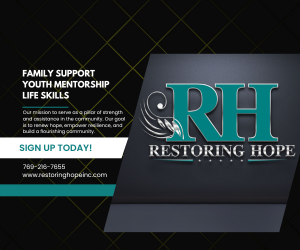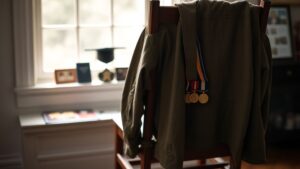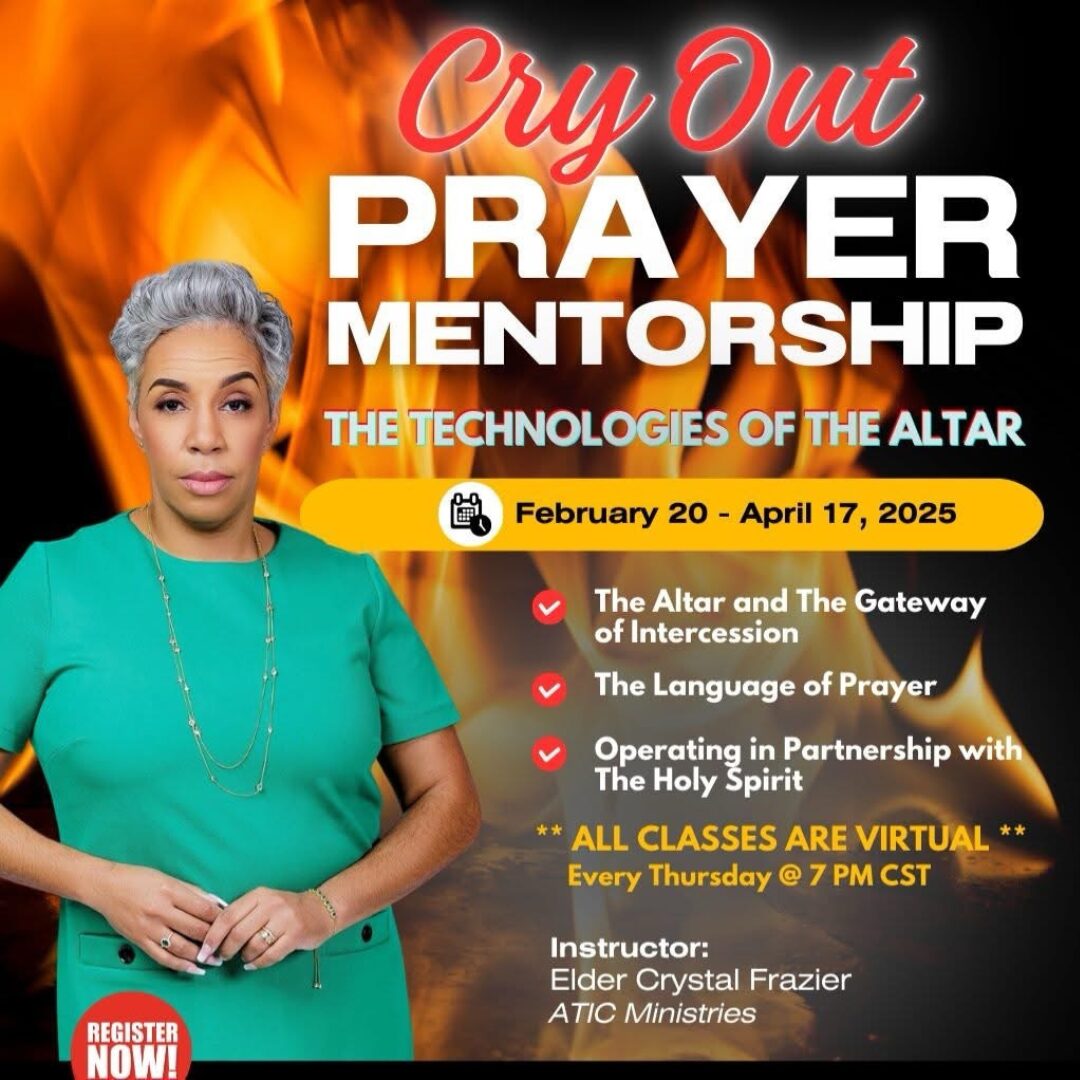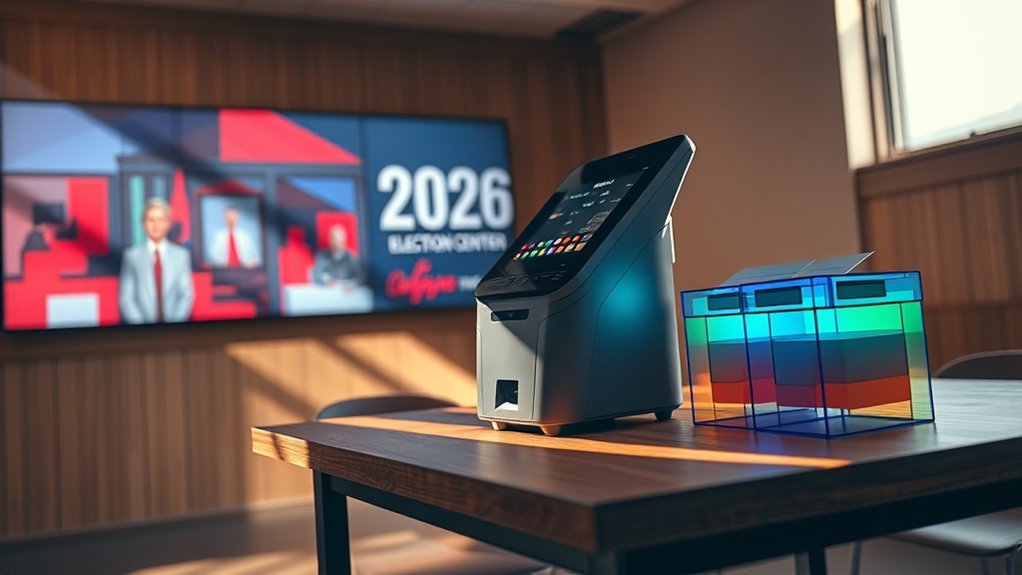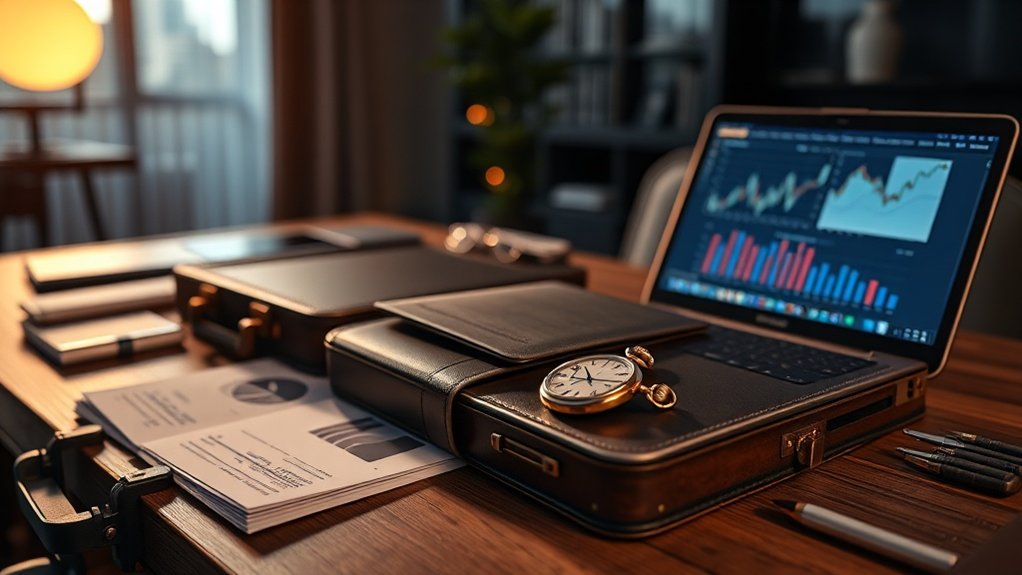Transcript
(0:02) You’re listening to Radio Health Journal, the trusted news source for medicine, science (0:07) and technology. (0:08) I’m Elizabeth Westfield. (0:10) I’m Mayan Vasta Betancourt.
(0:12) And I’m Greg Johnson. (0:14) This week, how can you stop negative thoughts from controlling your actions? (0:18) We fail on our New Year’s resolutions, not because we can’t do it, not because we don’t (0:22) have the right intentions, but I believe it’s because our mind and our emotions get in (0:26) our way. (0:27) But first, how a former Olympian keeps up with competition as she ages.
(0:32) The competition juices were revving up. (0:34) And it was exciting. (0:35) I’m 62 now.
(0:37) And it felt good to run, to win, to set the American record. (0:41) All that and more this week on Radio Health Journal. (0:47) You ever try fixing your car and realize you’re missing that one part? (0:50) Yeah, been there.
(0:52) That’s why eBay’s my go-to. (0:53) They’ve got millions of parts, guaranteed to fit. (0:55) I’m talking brake pads for when yours have seen one too many miles of stop and go.
(0:59) Oil filters, cause you don’t mess around with your engine care. (1:02) Even got this cold air intake on my watch list? (1:04) I might just go for it. (1:05) To keep the ride cool and your DIY streak hot.
(1:08) Find all the parts you need at prices you love. (1:10) Guaranteed to fit, every time. (1:12) eBay.
(1:12) Things. (1:13) People. (1:14) Love.
(1:15) Eligible items only. (1:15) Exclusion supplied. (1:17) Can your pad absorb everything and stay fresh? (1:20) Always Radiant with Flex Foam can.
(1:23) Get up to zero leaks, zero odor, and zero feel. (1:26) Because Flex Foam is the only pad with a flexible foam core. (1:30) You heard me.
(1:31) Foam. (1:31) Always Radiant is so thin, it feels like nothing, yet protects like nothing else. (1:36) Can your pad do that? (1:38) For up to 100% leak-free protection, try Always Radiant to see what Flex Foam can do for you.
(1:55) After four Olympic appearances, Joetta hung up her spikes in 2000. (1:59) And though she was no longer a middle-distance competitor, Joetta never gave up the athlete (2:05) mindset, always pushing to be better in all aspects of life. (2:09) So when her daughter said it would be a dream of hers to watch Joetta race, that’s exactly (2:14) what the 62-year-old went out to do.
(2:17) She’s a graduate of the University of Florida, so I was following her to all of her track (2:21) meets. (2:21) I went down to Stanford to do an event, and the team said, well, Ms. Joetta, if you can (2:27) run 32 seconds, you should enter the Masters race. (2:30) I ran 30 seconds flat.
(2:33) I came back at the end of January, and I entered the competition. (2:37) I trained four Tuesdays inside, and other than that, we were outside. (2:42) It was cold, either in my basement, running up and down stairs, and jumping rope.
(2:47) It had been 25 years since Joetta had last stepped up to the starting line, over two decades (2:52) since her body had been expected to train like an elite athlete. (2:56) Thankfully, Joetta had continued to fuel her passion for fitness. (3:01) And while that didn’t make her race prep a walk in the park, it made getting back into (3:05) the hang of things much easier.
(3:07) I didn’t have to lose 15 pounds. (3:09) I didn’t have to do any of that. (3:11) I was already at a nice enough body weight and all of that.
(3:15) And the difficult part was sprinting. (3:17) I don’t sprint. (3:19) So to get the turnover going for 200 meters, that was different.
(3:22) But other than that, it wasn’t difficult at all. (3:26) Because I jumped rope, I run stairs, I jump for 15, 20 minutes. (3:30) You know, I do some cardio activities to apply metrics.
(3:34) So from that perspective, I was good. (3:36) She had four weeks to get competition ready. (3:39) And the solid foundation of fitness she had built turned out to be a huge help
(3:43) Science is showing that her muscles may even remember her old training, already primed (3:49) to better perform the exercises. (3:51) Kevin Murak is a researcher whose work in mice has supported this idea of muscle memory. (3:57) What we’re learning more about is about this idea of quote-unquote muscle memory, which (4:00) is if you had exercised previously and taken time off for whatever reason and lost your (4:05) adaptations but then re-engaged in exercise later, the muscle tends to, for whatever reason, (4:10) remember the fact that it had exercised before.
(4:13) And you’re able to regain some of the benefits from the training more quickly. (4:18) I think we can say that with some relative certainty, because I’ve done some work in (4:22) that area. (4:23) Many others have as well.
(4:24) And I think we can say with some certainty that that is the case. (4:27) Murak is an assistant professor at the University of Arkansas in the Department of Exercise (4:31) Science. (4:32) He says that we’re not yet sure how long muscles will remember past activities.
(4:37) If you worked out in your 20s, then want to start up again in your 60s, will that early (4:42) exercise help you adapt quicker? (4:44) Or does muscle memory have an expiration date? (4:47) Regardless, Murak says it shouldn’t deter older adults from trying new workouts. (4:52) There probably is some benefit if you had been active before. (4:56) But I don’t want that to be taken as, oh, well, if I haven’t exercised early in my life, (5:00) well, I should just not do it because there’s no point.
(5:02) I’m not going to get the same type of benefit. (5:04) That’s not true. (5:05) I think exercise at any point in the lifespan is going to have some beneficial effects for (5:09) you.
(5:09) And it’s definitely worth pursuing. (5:12) If you’re not going to compete, it’s important that you stay in shape and be the best that (5:16) you can be. (5:17) We believe in being the champion of your life, not an Olympic champion, but the champion (5:21) of your life.
(5:22) And so if you’re going to be healthy as you go into your senior citizen years, you have (5:28) to start at an early age just like what you are now. (5:31) Competitions is a mindset. (5:33) I don’t run as fast as I used to, but I can still run.
(5:36) There were people there in their 80s and their 90s competing, long jumping, pole vaulting, (5:42) running sprints. (5:42) So if you put the time in physically and mentally and spiritually for your body, you’ll be fine. (5:50) Though many people begin working out early in life through team sports, exercise is even (5:54) more important as we get older.
(5:57) It’s the best defense we have against the loss in muscle mass that naturally happens (6:01) as we age. (6:02) This is a process called age-related sarcopenia. (6:06) And this is a process that just is fairly inevitable, and it can be slowed with exercise.
(6:12) We know this, right? (6:13) So let’s say, you know, there are different estimates as to when the loss of muscle mass (6:17) begins. (6:18) But, you know, there are estimates as early as 30 years of age if you’re inactive that (6:22) you start losing this muscle mass, and it’s just a gradual decline. (6:25) A decline that can be sped up through events like hospitalizations and broken bones.
(6:31) These situations often lead to periods of inactivity that exasperate the rate at which we lose (6:35) muscle mass. (6:36) And as many of us know, it becomes much more difficult to be active after living a sedentary (6:42) lifestyle. (6:43) If left unchecked, this compounding effect can set us up for failure as we reach our (6:48) later years in life.
(6:49) With aging, it’s different than if you were just not to be active and were to lose muscle (6:54) mass. (6:54) With aging, for instance, your muscle fibers are getting smaller, but you’re also losing (7:00) some of them. (7:01) What’s happening is the nerve that’s innervating the fibers and telling them to contract, if (7:06) you’re not using the muscle, the nerve eventually just starts to pull away from the muscle (7:11) fibers, from the cells that are contracting in your muscle.
(7:14) And so eventually those just start to go away. (7:17) And so you have this shrinking of the muscle, you have this loss of fibers, and a lot of (7:22) times you’re losing these more fast-twitch muscle fibers. (7:27) Skeletal muscles have two broad classifications of fibers, slow-twitch and fast-twitch.
(7:33) The slow-twitch fibers are primarily engaged during endurance activities like walking and (7:38) the low-intensity movements we use in everyday life. (7:42) On the other hand, fast-twitch fibers are responsible for explosive and powerful movements (7:46) like weightlifting and sprinting. (7:49) Both types are important, but as many of us age, we stop putting our bodies through those (7:53) more explosive movements.
(7:55) In turn, we begin to lose those fast-twitch fibers. (7:59) Murak says this contributes to a major threat, which is the loss of power. (8:04) So when you lose the muscle mass and the muscle is getting smaller and weaker, you’re losing (8:08) the force component, which is in a lot of ways related to the size of the muscle.
(8:13) But you’re also losing this velocity component, which is really, really important for if you (8:19) need to stop yourself from falling down or something like that, or if you need to move (8:23) quickly out of the way of something, or if you trip, having the ability to recover and (8:27) quickly activate the muscle to prevent you from falling down. (8:30) If you can’t do that anymore and you can’t have that quick response time, that’s going (8:34) to lead to problems, right? (8:35) That’s going to lead to maybe you do fall down when you could have prevented yourself (8:39) from doing that otherwise. (8:40) Maybe you fracture a hip.
(8:42) Maybe that is sort of the slide into becoming less independent and increasing the likelihood (8:48) of mortality. (8:49) So in order to help maintain your mobility and independence later in life, Murak advises (8:54) to continually engage those fast twitch muscle fibers. (8:58) Now, what I’m not saying is that old people should immediately go into the gym and start (9:01) doing box jumps.
(9:01) Not the message I’m trying to say. (9:03) What I am saying is that there are things that can be done from a training perspective (9:07) to help try and preserve this really important quality of the muscle, which is the power (9:11) producing capacity of it. (9:13) Maintaining your muscle power is important for longevity, but there are also other benefits (9:17) to strength training that deserve the spotlight.
(9:20) For one, having more muscle mass is good for your metabolism. (9:24) Your muscle is a sink for glucose, right? (9:28) I mean, that’s where we store the largest absolute amount of glucose in our body. (9:33) So there’s metabolic benefits to having muscle mass.
(9:37) Muscle also uses fat as a fuel source. (9:41) And so it’s a furnace for that. (9:43) And also, I mean, it’s amino acid depot, right? (9:47) Proteins are made from amino acids.
(9:48) If you have more muscle mass, you have this bigger storage of amino acids for whenever (9:53) stressful times are upon you and you can liberate these muscle proteins to go do other things (9:59) in your body. (10:00) While it’s more difficult to build muscle mass as we age due to declining hormone levels (10:04) and the natural loss of muscle mass, it’s not impossible. (10:07) And even if your muscles aren’t growing, maintaining the current function and power is extremely (10:12) valuable.
(10:13) But again, it’s important to ease into exercise and consult with medical professionals so (10:19) that you’re not increasing your chances of injury. (10:21) Just make sure you’re doing what you’re doing safely, but at the same time, also understand (10:26) that your body is capable of a lot more than you think it is. (10:28) And so, you know, it’s good to stress your body and do some cardiovascular exercise, (10:33) do some lifting, try to be good at both if you can.
(10:36) Just make sure you’re doing it safely. (10:38) Since Joetta had maintained her physical fitness since retiring in 2000, she was starting (10:43) her training in a good place. (10:45) But even with that solid foundation, there were factors she had to consider now competing (10:49) in a 62-year-old body.
(10:51) When I was young, I would just jump up on something. (10:54) And even though I could possibly still jump up, I may not be able to spring up as fast. (10:59) I’m very careful about what I’m doing.
(11:01) So that’s being wise. (11:03) I can still run, I can still jump over things, but I am not apprehensive. (11:07) But I make sure that my form is correct, that I’m stretching before I go into those spaces.
(11:13) This past February, Joetta entered the 2025 USA Track and Field Masters Indoor Championships. (11:20) She stepped up to the starting line with the goal to do her best, and finished the race (11:24) setting a new American record in the 200-meter dash for the 60-to-64 age group. (11:30) The competition juices were revving up.
(11:33) And it was exciting. (11:34) I’m 62 now. (11:35) And it felt good to run, to win, to set the American record, to have my daughter there (11:42) to watch it.
(11:43) And it was special. (11:44) And even though I cannot run as fast as I used to run, I put the work in and the effort (11:50) in, and I can run where I am today. (11:53) So as I move forward, and as anyone moves forward, it’s not about doing what you did (11:58) when you were a kid.
(11:59) It’s about embracing where you are now. (12:00) Joetta is hoping to compete again this year in the USA Outdoor Track and Field Championship, (12:06) which is set for the end of July. (12:08) You can find more information about Kevin Murak, Joetta, and all of our guests on our (12:12) website, RadioHealthJournal.org. (12:15) For more behind-the-scenes, follow RadioHealth Journal on Facebook, Instagram, and X. (12:20) Our writer-producer is Kristen Farrah.
(12:22) Our executive producer is Amiraz Avery. (12:25) I’m Elizabeth Westfield. (12:35) Coming up, why mental toughness isn’t just for professional athletes, when RadioHealth (12:40) Journal returns.
(12:44) Summer is calling, and guess what? (12:47) Macy’s has the answers for every adventure, with new swim trends and sandals to take you (12:51) from the beach to the beach bar. (12:53) Plus, linen suits from Tommy Hilfiger and Michael Kors, and dresses from CeCe to take (12:58) you from brunch to the dinner party. (12:59) Even better, get it all for 25 to 60% off at our Memorial Day sale.
(13:03) So wherever this season takes you, make Macy’s your first destination. (13:08) But hurry, this sale is going on now. (13:10) Savings off sale and already reduced prices, exclusions apply.
(13:14) Sometimes I struggle to get to sleep. (13:16) My body stopped for the day, but my mind is still running. (13:20) So I take Z-Quil.
(13:22) Z-Quil, the world’s number one sleep aid brand, has a range of non-habit forming products (13:26) to fit you and your family’s needs. (13:28) Invest in a great night’s sleep for the best you tomorrow. (13:32) I’m awake and ready to take on anything.
(13:35) Better days start with Z-Quil Nights. (13:38) Explore our products at Z-Quil.com. (13:41) Uses directed. (13:41) Keep out of reach of children.
(13:50) From Roman gladiators to wildly successful superhero movies, humanity has a long history (13:57) of valuing physical strength. (13:59) In fact, the U.S. is home to more than 40,000 fitness gyms, according to the Global Health (14:04) and Fitness Association. (14:06) Every day, people walk through those doors looking to improve their lives.
(14:11) But there’s another aspect of strength that’s often neglected, mental toughness. (14:16) In simplest form, when I think about someone who is mentally tough, I’m thinking of someone (14:21) who shows up even though they don’t want to. (14:24) They endure every ounce of effort that they have.
(14:27) So even though on a given day they may only have 70% effort, they give 100% of that 70. (14:34) It’s not always about being perfect because that’s not real. (14:37) So they exert every ounce of effort they have to give that day.
(14:40) That’s Dr. Haley Perlis, an author, public speaker, and doctor of sport and performance (14:45) psychology. (14:46) She says people who are mentally tough willingly endure discomfort and even accept the risk (14:51) of failing. (14:52) Even though they hate to lose and even though they don’t want to lose, they understand that (14:57) there are some acceptances and sacrifices.
(14:59) So they are willing to endure a little bit of pain mentally and physically. (15:04) Which isn’t easy. (15:06) Without consistent effort, many people become content following the path of least resistance, (15:11) often giving us opposite results than what we want.
(15:14) Mental weakness is letting ourselves off the hook. (15:18) That’s very different than giving ourselves grace. (15:20) I believe in giving ourselves grace, but I don’t believe in letting ourselves off the (15:26) hook where you come up with any reason, justify anything to not pursue that or to give up before (15:35) you really needed to.
(15:37) And while these ideas are common in athletics, many people outside of professional sports (15:42) don’t usually think about mental toughness in our everyday lives. (15:46) In fact, Perlis felt the same way until she stepped into the corporate world. (15:49) It didn’t take me long to realize that all the tools and techniques that I’m sharing (15:54) with the athletes that I’m working with and that I used for myself as an athlete, I need (15:58) them now more than I ever did as an athlete sometimes.
(16:03) And again, I believe that our thoughts directly impact our emotions and we are emotional creatures (16:11) and our emotions can get in our way in business and in life. (16:15) So we need to really get our thoughts and our stories right so that we can feel more (16:22) of the pleasant things then allow us to follow through on our intentions. (16:27) She says setting goals is the easy part.
(16:30) It’s mental toughness that determines whether we follow through on our intentions. (16:35) Consistency is hard, so we need to learn how to embrace challenges instead of cowering (16:40) away. (16:41) Perlis says it starts with changing the stories we tell ourselves.
(16:44) There is a story in our minds that prevent us from following through and that story usually (16:50) begins with the word, but. (16:52) I want to exercise after work today, but I’m too tired. (16:57) I want to close up my email so that I can be with my family, but I will feel guilty (17:03) if I don’t respond to these last few emails.
(17:06) I want to pursue this, but I want to do that, but. (17:11) And that, but is a story that gets in our way and those butts create emotions that don’t (17:18) feel good. (17:19) So we need to reframe those excuses.
(17:21) There are a couple ways, but one of the greatest ways is to look for the truth in our butts. (17:29) So what do I mean by that? (17:30) Going back to the examples that we already talked about. (17:33) I want to exercise after work, but I’m too tired.
(17:37) Well, let’s think about the truth. (17:38) What have we been physically doing all day? (17:41) Sitting. (17:42) So the truth is that I’m quite physically well recovered, wouldn’t you say? (17:47) I’m physically been resting all day.
(17:49) So am I physically tired? (17:52) No. (17:52) The truth is I’m physically well rested. (17:54) I am emotionally and mentally exhausted.
(17:57) That’s the truth too. (17:59) Perlis believes that finding truth in your thoughts is a great motivator, which is why (18:04) she doesn’t believe in the popular saying, fake it till you make it. (18:08) To not feel good enough to have doubt and then just to say, you’ll be okay.
(18:15) In my consulting practice, I don’t really hold the pom poms up like that. (18:18) You can do it. (18:19) You can do it.
(18:20) So I offer a different strategy. (18:23) I understand that people sometimes don’t feel like they can do something. (18:26) I am learning how to mountain bike so that this is my new sport.
(18:30) I’m in my second summer and I’m learning how to mountain bike and it’s technical for me. (18:35) And it is coming from the sports psychologist, my most feared sport. (18:40) As she’s learning to bike over rocks and through narrow trees, Perlis has had moments of self-doubt (18:46) where she doesn’t believe she can make a jump and finish the path.
(18:50) But instead of trying to fake a sense of confidence, Perlis leans into the truth. (18:55) I’m a good listener. (18:56) I listen to what people I trust tell me.
(19:01) I’m also technically gifted. (19:04) So as an athlete, I was not the strongest person out there, but I had technique. (19:09) So even though I don’t necessarily think that the fear of the mountain bike and this current (19:14) rock and this uphill get to me, I know that I’m coachable.
(19:17) So I listen to the person who’s coaching me. (19:20) I trust the person who’s coaching me. (19:21) I listen.
(19:22) And that’s a little bit different than what I think other people do. (19:25) You can do it. (19:26) Or they look in the mirror and they say that they are that.
(19:28) I want you to find something that you are, you do have that skill set already. (19:32) You believe it. (19:33) You actually have the confidence.
(19:35) And then apply those skills to that challenge of yours. (19:39) Another important aspect of accomplishing a goal is motivation. (19:43) While mental toughness means being consistent, even on days that you’re not inspired, you (19:48) still need to want to complete a task.
(19:50) Otherwise, it becomes exponentially more difficult to reach your goal. (19:55) Perlis believes you can’t force yourself to want something by pure will. (20:00) Instead, she advises that we focus on activities that truly interest us.
(20:04) There are parents all the time who come to me because they want me to motivate their (20:08) children to participate in a sport. (20:10) And I’ll never forget there was one couple who came to me because they wanted me to motivate (20:14) their daughter to swim. (20:16) Swimming is a 4.30, 5 a.m. wake-up call to go and the hours and this daughter did not (20:22) want to be a swimmer.
(20:23) It was very clear. (20:24) And unfortunately, I saw it. (20:26) If they continue to force her into swimming, they were going to take away her love of activity.
(20:31) So I offered, let’s really dissect what this daughter wants to do. (20:35) And she found what, you know, other things that she was more interested in doing. (20:38) But discovering what truly interests you isn’t the only step.
(20:42) You then have to find a way to self-motivate. (20:45) If you love to learn new things, do not get on the treadmill where you already know how (20:49) to walk right, left, right, left, right, left. (20:51) Go and learn something new.
(20:53) That’s how I believe we become motivated. (20:55) We already know our values in life, what we love in life. (21:01) So see if you can bring those loves into that activity that you want to get motivated for (21:06) and connect your existing loves to that activity.
(21:10) And once you’re invested, Perlis says the final part of mental toughness is wanting (21:15) to succeed more than you’re afraid to fail. (21:17) I don’t like to lose. (21:18) Believe me.
(21:19) I don’t like failure. (21:19) I don’t like to lose. (21:21) But if we harp on the failure, if I let myself get down on myself for not succeeding, that (21:26) is going to drain me of mental energy.
(21:28) That is going to drain me of emotional energy, and that’s not going to help me be motivated (21:32) to try again, to go again. (21:34) But if I’m focused on that, I want success more than I want the failure. (21:38) You’re still afraid, but you’re almost with the fear on mute because you are focused on (21:42) success.
(21:43) And that, I believe, helps people overcome their failure. (21:46) When people fall down, wanting success helps them get back up. (21:50) You can find more information about Dr. Haley Perlis and all of our guests on our webook, Twitbsite, (21:55) RadioHealthJournal.org. (21:57) For more behind-the-scenes, follow Radio Health Journal on Faceter, and Instagram.
(22:02) Our writer-producer is Kristen Farrah. (22:05) Our production manager is Jason Dickey. (22:07) I’m Nancy Benson.
(22:12) This rerun, which originally aired in 2022, is in honor of Nancy Benson. (22:17) As a founding host of Radio Health Journal, she spent more than 30 years voicing impactful (22:22) stories for the show, speaking directly to you, the listeners, each week. (22:26) After retiring in 2023, she reignited her love of traveling and spent precious time (22:31) with friends and family.
(22:32) Nancy, who passed in April, will forever be cherished by the Radio Health Journal community. (22:38) Radio Health Journal returns in just a moment. (22:42) Progressive knows when you’re in your RV, you’re already on vacation.
(22:45) That’s when you become Vacation You, who just camped where there’s absolutely no shade. (22:52) Even though Regular You burns easily. (22:54) In fact, Vacation You burns too, but is too stubborn to admit it, which is why Regular (22:57) You gets in trouble at the dermatologist because Vacation You doesn’t do doctors.]
(23:01) So bundle your RV with your home or auto policy and earn an automatic discount from Progressive. (23:06) And spend the savings on the both of you. (23:09) Progressive Casualty Insurance Company affiliates and other insurers not available in all states (23:11) or situations.
(23:12) Oh, oh, oh, only indulgent moisture body wash. (23:16) It’s me, only indulgent moisture body wash. (23:18) I see those dry elbows, baby.
(23:20) But don’t worry, get moisturized right in the shower. (23:23) So hydrated, you can skip the lotion after. (23:25) Don’t want to see it dry no more.
(23:27) Skin so moisturized with body wash. (23:32) Look at you now. (23:34) No more dry skin.
(23:35) Your skin gets the moisture it craves with. (23:38) Oh, oh, oh, only indulgent moisture body wash. (23:43) If you love to travel, Capital One has a rewards credit card that’s perfect for you.
(23:47) With the Capital One Venture X card, you earn unlimited double miles on everything you buy. (23:51) Plus, you get premium benefits at a collection of luxury hotels when you book on Capital One Travel. (23:57) And with Venture X, you get access to over 1,000 airport lounges worldwide.
(24:03) Open up a world of travel possibilities with the Capital One Venture X card. (24:07) What’s in your wallet? (24:09) Terms apply. (24:09) Lounge access is subject to change.
(24:11) See CapitalOne.com for details. (24:13) On your period, sudden gushes happen without warning. (24:17) But now you can say goodbye to stand-up gush fears.
(24:23) Thanks to Always Ultra Thins with Rapid Dry technology. (24:27) It absorbs gushes two times faster than the leading store brand and gives you up to 100% leak-free protection. (24:36) Hello, clean and comfortable.
(24:38) With Always, fear no gush. (24:44) Medical Notes this week. (24:46) Should pregnant women stay away from beauty products? (24:50) A new study in Nature Communications has revealed that common cosmetic chemicals could affect a baby’s development.
(24:56) Phthalates are found in shampoos, soaps, and plastic food containers. (25:01) They’re known to be hormone disruptors, and researchers have discovered that they may also negatively affect a newborn’s metabolism and brain development. (25:10) A new saliva test that can help cancer patients.
(25:13) The drug 5-FU is one of the oldest chemotherapy drugs that’s still used today. (25:19) However, some patients experience serious, sometimes life-threatening complications. (25:24) Thankfully, a new test analyzes saliva samples to see which cancer patients have a higher risk of running into these issues.
(25:32) The research is published in the Journal of Clinical Oncology. (25:35) A promising step in understanding menopause. (25:39) Research in the Biophysical Journal uses a new mathematical approach to figuring out when menopause will occur.
(25:46) This estimate could improve fertility planning and provide better information for age-related health risks. (25:52) It may also be instrumental in helping women plan for hormonal therapies and interventions. (25:58) And finally, here’s one more reason to have an abundance of fruits and vegetables in your diet.
(26:03) A naturally-occurring compound found in kale, berries, and leafy vegetables could be a treatment for ALS. (26:11) This antioxidant helps us maintain motor function while also reducing muscle atrophy. (26:16) According to research published in Acta Neuropathologica Communications, the compound slows nerve cell damage and improves overall cell function.
(26:25) And that’s Medical Notes this week. I’m Mayan Vastabetancourt. (26:30) Summer is calling, and guess what? Macy’s has the answers for every adventure.
(26:34) With new swim trends and sandals to take you from the beach to the beach bar. (26:38) Plus, linen suits from Tommy Hilfiger and Michael Kors. (26:41) And dresses from CeCe to take you from brunch to the dinner party.
(26:45) Even better, get it all for 25-60% off at our Memorial Day Sale. (26:49) So wherever this season takes you, make Macy’s your first destination. (26:53) But hurry, this sale is going on now.
(26:55) Savings off sale and already reduced prices. Exclusions apply. (26:59) At Charmin, we heard you shouldn’t talk about going to the bathroom in public, so we decided to sing about it.
(27:04) Let a candle pour some wine. Grab a roll, the soft kind for a little me time. (27:09) Charmin Ultra Soft Smooth Tear.
Wavy edges for my rear. (27:14) So let the softness caress your soul. Just relax, you’re on a roll.
(27:20) Charmin Ultra Soft Smooth Tear. (27:22) Charmin Ultra Soft Smooth Tear has the same softness you love. (27:25) Now with wavy edges that tear better than the leading one-ply brand.
(27:28) Enjoy the go with Charmin. (27:32) Thank you for joining us this week, and every week, as we break down the science stories you need to know. (27:37) You can find all of our past segments and guests on our website, RadioHealthJournal.org, or wherever you listen to podcasts.
(27:44) Follow us on Instagram, Facebook, and X for daily content. (27:47) And tune in next week for another edition of Radio Health Journal.



